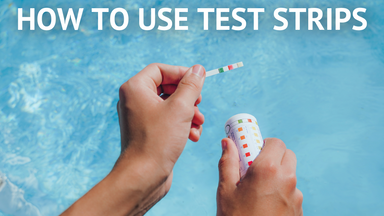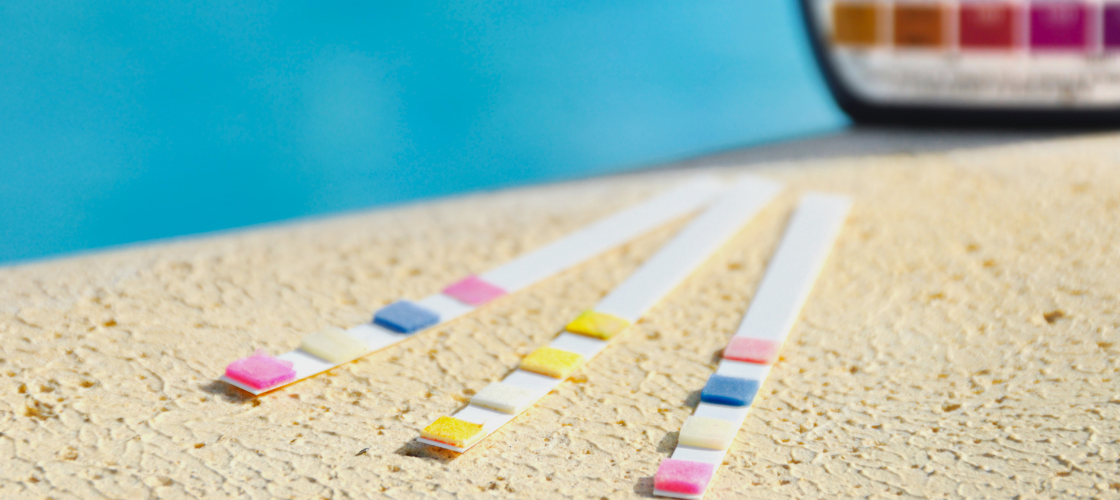Published by Brooke Sardella on 08/22/2022
How To Correctly Use Pool Test Strips
Testing your pool water is one of the key maintenance tasks you must keep up with for a sparkling clear and enjoyable pool. They are an easy way to receive accurate results about problems in your water that can cascade into bigger issues if not addressed in a timely manner.
When using test strips, your first instinct may be to simply dip them over the side of the pool. Yet, the best way to get a comprehensive reading is to test water from the deep end. You can do this by grabbing a cup and submerging it elbow deep to collect your water sample.
Once you have your sample, you can simply dip the test strip into the cup and wait 15 seconds for the results to appear. Make sure not to touch the test squares at any time before or after testing and do not shake, wipe or dry the strips. Read the strip in natural daylight for the most accurate representation of the colors shown.
Each test strip brand may be slightly different in terms of what they test. Most strips will have some variation of the following metrics:
Total Hardness: the amount of calcium and other minerals in your water. Having water either too hard or too soft, combined with other balance factors, can damage pool equipment and surfaces. Maintain Total Hardness between 175—275 ppm.
Total Chlorine: the amount of chlorine in your water, including free available and combined chlorine. Maintain Total Chlorine between 1-4 ppm.
Free Chlorine: the amount of chlorine available to sanitize your pool water, which is necessary to kill bacteria and control algae. Maintain Free Chlorine between 1-4 ppm.
pH: measures how acidic or basic your pool water is. The measurement is critical to the health of your pool water. Having an imbalanced pH can damage pool equipment, cause swimmer discomfort, and hinder the performance of your sanitizer. Maintain pH between 7.2 to 7.6.
Total Alkalinity: A low total alkalinity may cause fluctuations in your water’s pH and exacerbate low pH. Having highly alkaline water can cause pH to drift upwards. Maintain Total Alkalinity between 80-150 ppm.
Stabilizer: the amount of cyanuric acid in your pool water. Stabilized chlorine lasts longer under direct sunlight and reduces the sun’s impact on chlorine loss. Maintain a Stabilizer level of at least 30 ppm.
| Optimal Levels | ||
| Total Hardness | 175-275 ppm | |
| Total Chlorine | 1-4 ppm | |
| Free Chlorine | 1-4 ppm | |
| pH | 7.2-7.6 | |
| Total Alkalinity | 80-150 ppm | |
| Stabilizer | 30 ppm | |
The test strips we recommend are the LaMotte Insta-Test 4 and for saltwater pools the AquaChek Salt System Test Kit. Once you have discovered your results, be sure to check out our blog posts on how to solve common pool issues such as algae and phosphate levels.






